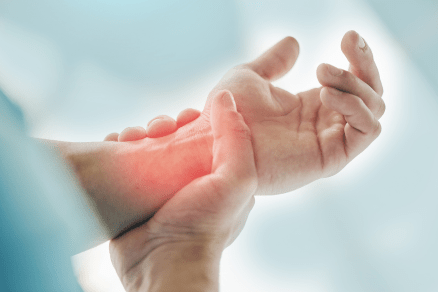Lower back pain is a common complaint during pregnancy, with over 50% of pregnant women experiencing lumbar or pelvic pain at some point. The physical changes and weight gain associated with pregnancy often strain the back muscles and spine, leading to aches, stiffness, and even debilitating pain.
This article will explore the specific causes, anatomy, preventive steps, and medical and physical therapy treatments available for managing lower back pain in expecting mothers.
Causes of Lower Back Pain During Pregnancy
The most common reasons pregnant women experience back pain include:
- Extra Weight – The average pregnancy weight gain is 25-35 lbs. According to research, carrying this extra weight in the abdominal area increases force across the lumbar spine by up to 100%. This strains muscles/ligaments.
- Postural Changes – As the belly grows, pregnant women often arch the lower back and rotate the pelvis forward to maintain balance. This places excessive bending forces on the lumbar spine and can sprain ligaments.
- Hormones – Raised levels of relaxin, estrogen, and progesterone loosen joints and ligaments in preparation for delivery. However, this can lead to instability and shearing forces in the sacroiliac joints and spine.
- Stress on the Pelvic Floor – Up to 45% of women experience pelvic floor dysfunction during pregnancy. Weakened pelvic muscles reduce stability and lead to pain.
- Sciatic Nerve Compression – The enlarging uterus can compress or irritate the sciatic nerve. Up to 34% of women experience symptoms of sciatica during pregnancy.
Understanding the Anatomy Behind the Pain
The lumbar (lower) spine supports the upper body’s weight and allows movement. The increased force from the weight of a growing fetus/uterus can strain the anatomical structures in this region:
- Lumbar vertebrae – During pregnancy, compression, flexion, and shear forces on the vertebral bones and discs contribute to back pain. The lumbar curve tends to flatten as well, reducing support.
- Sacroiliac joints – These joints often become asymmetrical from the uneven forces of pregnancy. This leads to inflammation and sacroiliac joint dysfunction for many women.
- Abdominal muscles – The rectus abdominis and obliques stretch and weaken during pregnancy. This reduces lumbar support and stability.
- Pelvic floor – Supports pelvic organs and stabilizes joints. However, pregnancy can cause weakening and diastasis of these muscles, contributing to instability and pain.
- Sciatic nerves – Pressure from the fetus and hormone inflammation can compress the sciatic nerves. This commonly results in shooting and tingling pain down the legs.
Steps to Prevent Lower Back Pain During Pregnancy
While some back pain may be inevitable during pregnancy, certain precautions can help minimize risk and discomfort:
- Maintain proper posture – Stand tall with shoulders back, avoiding excessive lower back arching. Use chairs, pillows, and pregnancy belts for extra support.
- Choose supportive footwear – Shoes with good arch support and possibly orthotics can help take pressure off the spine and hips while walking. Avoid high heels.
- Exercise regularly – Low-impact cardio, yoga, and targeted stretches strengthen the core and pelvic floor muscles, providing stability and relief. Strengthening the glutes and thighs also helps.
- Avoid heavy lifting – Bend at the knees and hips to lift objects properly without twisting or straining the spine.
- Manage weight gain – Stick to your doctor’s recommended weight gain goals to avoid excessive loading of the joints and muscles.
- Apply heat – Use heating pads, warm baths, or heated blankets to relax tight muscles and increase blood flow.
- Consider massage – Prenatal massage can help relieve muscle tension and stiffness without using medication. Communicate any precautions to the therapist.
Medical Treatments for Lower Back Pain in Pregnancy
If back pain persists despite lifestyle changes and home remedies, doctors may recommend these medical treatment options in addition to physical therapy:
- Acetaminophen – For mild cases, Tylenol and other acetaminophen products can provide relief with OB/GYN approval. Non-steroidal anti-inflammatories (NSAIDs) should be avoided.
- Prescription pain medication – Narcotics like codeine may be prescribed in very limited quantities for short-term use if the pain is severe. The risks must be carefully weighed.
- Epidural steroid injections – Steroid medication injected into the epidural space can reduce nerve inflammation and irritation without affecting the fetus. Multiple injections may be required.
- Alternative medicine – Options like acupuncture, spinal manipulation, and transcutaneous electrical nerve stimulation (TENS) may relieve some women under trained providers’ supervision.
- Support belts – Custom fitted braces or flexible maternity belts can help stabilize the pelvis and lower back by improving posture.
Physical Therapy Treatment for Pregnancy Back Pain
Physical therapy offers a non-invasive approach to reducing back and pelvic pain during pregnancy without drugs. A women’s health physical therapist can provide:
- Targeted exercises – Core strengthening, pelvic tilts, knee-to-chest, etc.- improve stability and muscle function.
- Postural retraining – Retrain standing and sitting positions to maintain a neutral spine.
- Manual therapy – Gentle joint mobilization and soft tissue techniques provide relief.
- Pain modalities – Ice, heat, ultrasound, and TENS units help relieve muscular tightness and pain.
- Prenatal supports and aids – Belts, pregnancy pillows, etc., can take pressure off the pelvis and lower back while resting.
- Patient education – Help mothers understand optimal body mechanics for common movements to prevent future issues.
When to See a Doctor for Pregnancy Back Pain
While mild discomfort is common, see a doctor promptly if the pain is:
- Severe or persistent, especially if it radiates down the leg (sciatica)
- Accompanied by abdominal cramping, weakness, or bladder/bowel issues
- Resulting from any trauma like a fall or car accident
- Present in early pregnancy, as this is less common
Seek immediate care for any concerns about potential spinal or abdominal complications. Do not hesitate to get evaluated.
Coping with Lower Back Discomfort
Pregnancy back pain can be stressful to manage atop other challenges. Be patient with your body, rest when needed, maintain proper posture, and avoid activities that aggravate symptoms. Keep providers informed about chronic or worsening discomfort. Consider support groups and mental health resources if pain causes emotional distress. With an integrated treatment plan, most mothers find their back pain improves after delivery.
FAQs
Some helpful at-home remedies include applying heat, maintaining proper posture, choosing supportive footwear, doing gentle stretches and exercises, avoiding heavy lifting, managing weight gain, getting a prenatal massage, and using braces or pregnancy belts for extra support.
Yes, physical therapy is considered very safe and effective for treating pregnancy-related back pain without drugs. A prenatal physical therapist can provide exercises, manual techniques, modalities like heat and ice, aids, and education.
To help prevent pain, maintain proper posture, choose supportive shoes, exercise regularly, avoid heavy lifting, manage weight gain, apply heat, get massages, and consider using a pregnancy support belt.
For most women, pregnancy-related back pain does improve significantly or resolves entirely after giving birth as the body recovers and hormone levels return to normal.
Back pain during early pregnancy, especially in the first trimester, is less common and could indicate a problem, so it’s important to talk to your doctor about any symptoms.
You should consult your OB/GYN before taking any medication. Acetaminophen is generally considered safe. Anti-inflammatories and strong pain pills carry more risks and need medical oversight.
Some beneficial low-impact exercises include pelvic tilts, knee-to-chest stretches, prenatal yoga or Pilates, swimming, walking, and using an elliptical machine or stationary bike.

Chris Hanks is an experienced physical therapist based in Austin, Texas. He earned his Doctor of Physical Therapy degree from the University of Texas at Austin in 2005 after completing his Bachelor of Science in Kinesiology in 2002. Dr. Hanks has been a licensed PT in Texas since 2005. He began his career at Central Texas Rehabilitation Hospital before moving to Austin Sports Medicine Center in 2010. In 2015, Dr. Hanks opened his own clinic, Capital City Physical Therapy, where he continues to treat patients.






